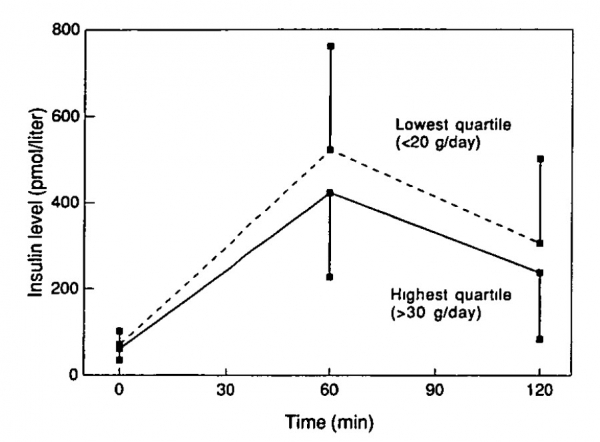In 1990 a cross-sectional survey was carried out on diet in relation to insulin in the Zutphen Elderly Study. The individual association of dietary fiber intake was inversely associated with the area under the insulin curve. In 1970 the Zutphen Study also carried out a cross-sectional analysis on individual diet and glucose tolerance. The intake of saturated fatty acids and dietary cholesterol was positively related to fasting blood glucose. Pectin intake was inversely related to the area under the glucose curve. In 1989/1990 a 2-hour post-load oral glucose tolerance test was performed in the Dutch and Finnish cohorts, along with information on the habitual diet. An increase in consumption of vegetables, legumes, potatoes and fish during the 20-year follow-up was inversely related to the 2-hour glucose level.

Insulin levels (mean and standard deviation) during an oral glucose tolerance test in 389 men aged 70-89 years, by quartiles of dietary fiber intake: The Zutphen Elderly Study, 1990.
Interpretation
Dietary fiber intake of individuals was inversely related to insulin levels in the cross-sectional surveys. Saturated fatty acids and dietary cholesterol were positively and pectin was inversely related to oral glucose tolerance levels in these cross-sectional surveys. An increase over time in the consumption of vegetables, legumes, potatoes and fish was inversely related to subsequent glucose tolerance.
